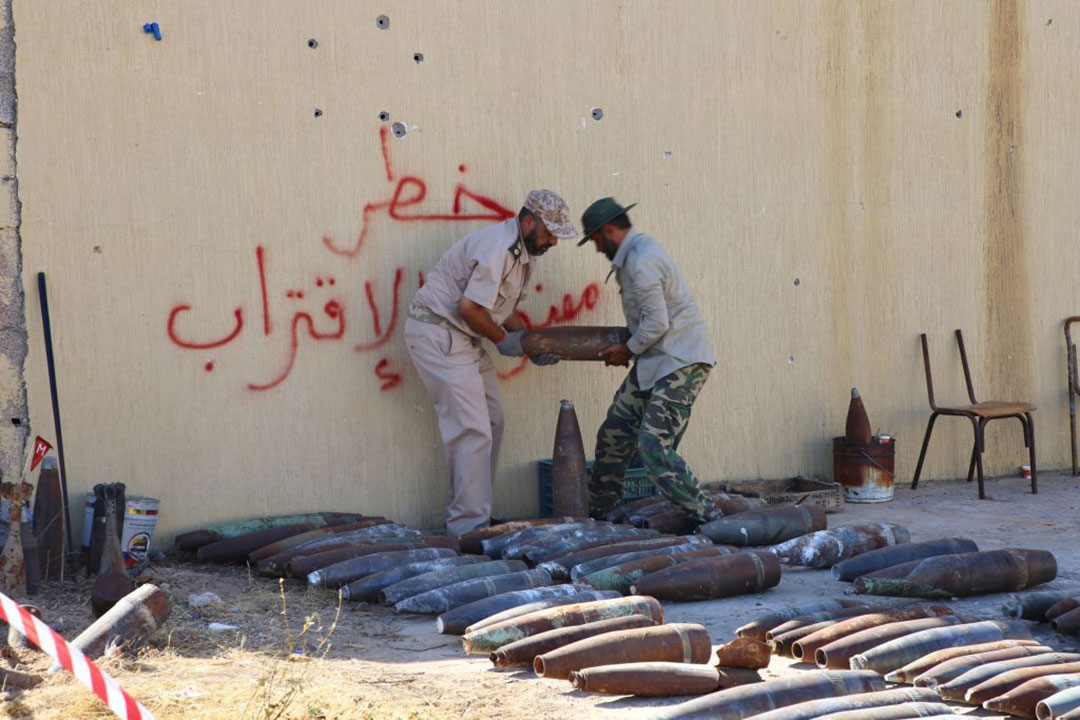Foreign Fighters Complicate Reconciliation Plans in Libya
ADF STAFF
The cease-fire that ended more than a decade of fighting in Libya included the demand that all foreign fighters leave the country. A series of international resolutions following the cease-fire echoed the call.
Yet, more than 10 months after the October 2020 truce, an estimated 20,000 fighters from Chad, Russia, Sudan, and Syria remain in Libya. International observers say their presence continues to destabilize the country even as its political leaders try to stitch it back together.
“If elections are to be held in December 2021 as scheduled, Libyans should be able to undertake that process in a safe and secure environment, and the presence of these actors impedes that,” Jelena Aparac, chair of the United Nations Working Group on the Use of Mercenaries said in a report at the end of July.
Meanwhile, Libya has become a source of instability beyond its borders as some of those foreign fighters — primarily from Sudan and Chad — return home with money, guns and battle training. The fighters who assassinated Chadian President Idriss Déby in April got their training on the battlefields of Libya.
Before the cease-fire, both sides of the Libyan conflict employed foreign fighters.
Rival forces based in eastern Libya attacked the Government of National Accord (GNA) in Tripoli with a diverse mix of guns-for-hire, including Russia’s notorious Wagner Group, bolstering Libyan troops under Field Marshal Khalifa Haftar. Haftar’s foreign fighters received weapons and financial support from Russia, Egypt and the United Arab Emirates.
In response, the GNA received help from Turkey, which sent its own forces and Syrian fighters. Then-Sudanese President Omar al-Bashir also sent his own troops to support the Tripoli government. Qatar provided support.
While the fighting has faded, the fighters remain on the ground, many supporting their own agenda or that of their foreign sponsor. Who are they and who are their backers?
Wagner Group: Backed by Russian President Vladimir Putin, an estimated 2,000 Russian mercenaries remain active throughout central and eastern parts of Libya, where they are literally dug in. Earlier this year, Wagner forces excavated a 70-kilometer trench across the heart of the country and took over operations at Libya’s main oil refinery. Although they surrendered the refinery to the new Libyan government, Wagner troops continue to operate out of an air base in Jufra. Wagner forces have urged tribes in southern Libya to support Haftar. They are suspected of leaving behind hundreds of booby-trapped Russian-made mines and other explosives in civilian areas when Haftar’s forces were driven from the outskirts of Tripoli last year with the help of Turkish troops.
Sudan and Chad: The U.N. estimates that more than 11,000 foreign fighters are veterans of decadeslong interethnic conflicts in Libya’s neighbors to the south and southeast. They can be found on both sides of the conflict. Sudanese fighters supporting the Tripoli government had the backing of Sudan’s former President Omar al-Bashir. The U.N. estimates that about 1,000 fighters with Sudan’s paramilitary Rapid Support Forces are fighting on the side of Haftar with financial support from the United Arab Emirates. Members of the Chadian opposition group Conseil du Commandement Militaire pour le Salut de la République have been active in the south and targeted by troops loyal to Haftar.
Syrians: Fighters from Syria can be found on both sides of the Libyan conflict as well. Turkey recruited several thousand to serve alongside its own troops to support the GNA. The Wagner Group has recruited its own Syrian fighters as part of its work on behalf of Haftar. Turkey claims Wagner conducted 137 flights from Syria into eastern Libya between October 2020 and April 2021.
The presence of so many foreign fighters, often with differing agendas, complicates the process of reuniting the country.
Despite repeated calls to remove all foreign fighters from Libya, few seem to be leaving. Turkey, for example, refuses to remove its military, which were invited by then then-GNA to help the internationally recognized government fend off attacks by mercenaries and other forces loyal to Haftar — forces that remain in place in the country.
During the Second Berlin Conference in June, as international delegates drew up plans for elections and demanded that foreign fighters leave, Turkish delegates added an exemption that lets its troops stay in Libya.
Some fighters from Sudan and Chad have begun to return home as the political landscapes in those countries have shifted with the death of Déby and al-Bashir’s fall from power.
The influence of foreign fighters and their benefactors continues to complicate attempts to reach an agreement on the future of Libya.
The most recent meeting of the Libyan Political Dialogue Forum in Geneva, Switzerland, in July ended without a conclusion about the scope of elections planned for December. The reason, according to observers, was interference from outside forces hoping to shape the outcome in favor of their preferred side. The presence of foreign fighters is also slowing the implementation of the cease-fire.
“The next major step in the Ceasefire Agreement’s implementation process is to commence the withdrawal of all mercenaries, foreign fighters, and forces from Libya without delay,” said Ján Kubiš, special envoy for Libya and head of the U.N. Support Mission to Libya. He added that this withdrawal will help the flow of commercial goods and humanitarian support that are badly needed in Libya.


Comments are closed.